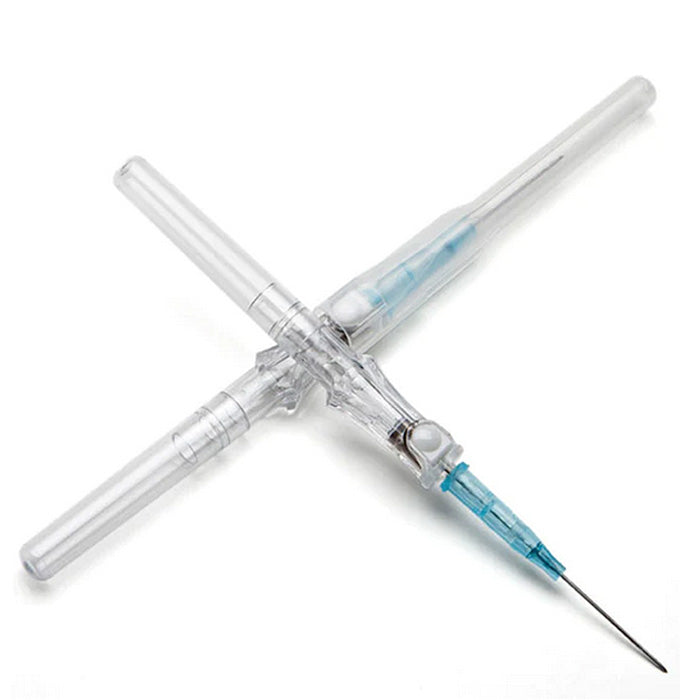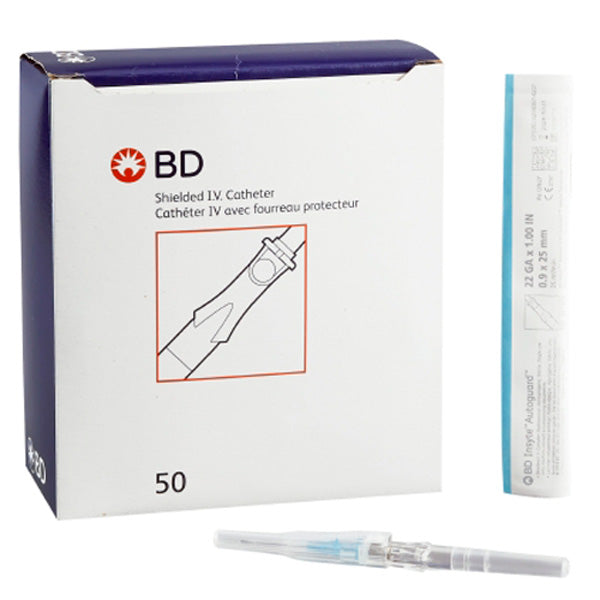Insyte IV Catheter Needle, 22ga x 1 inch, Straight Hub, Retracting Needle (Each)
BD 381423 Insyte Autoguard Blood Control Catheter Shielded 22 Gauge 1" are designed to provide security and safety to patients. They work by protecting patients from potential blood-borne pathogens and controlling the risk of accidental catheter pullouts.
- Autoguard™ Needle Shielding Device-with the push of a button, the needle instantly retracts reducing the risk of accidental needle stick injuries
- BD Vialon™, a unique proprietary biomaterial, has been proven to enhance clinical and economic outcomes
- Reduces IV restarts due to reduced complications
- Increases the ease of penetration
BD 22 Gauge x 1" Insyte IV Catheter Needles with Shielded are medical devices used for intravenous (IV) therapy. They consist of a hollow, cylindrical needle with a sharp tip and a flexible plastic catheter attached to it. The 22 gauge size refers to the diameter of the needle, which is relatively small. The needle is 1 inch in length, making it appropriate for accessing small or medium-sized veins. The "Insyte" in the product name is the brand name of the needle and "IV" refers to the fact that it is used for IV therapy.
The needle also has a safety feature called a shielded wing, which can be pushed down over the needle once it is inserted into the vein to protect both the patient and healthcare provider from accidental needle stick injuries. This makes the needle ideal for use in busy healthcare settings where there is a high risk of accidental needle stick injuries.
The BD 22 Gauge x 1" Insyte IV Catheter Needles with Shielded are sterile and single-use devices that are used in hospitals, clinics, and other healthcare facilities. They are typically used to administer medication, fluids, or draw blood from a patient’s vein, or to monitor certain vital signs. They can also be used to introduce specialized instruments or tools into the vein for diagnostic or therapeutic purposes. These needles are known for their sharpness and high flow rates, making them essential tools for successful IV therapy.


